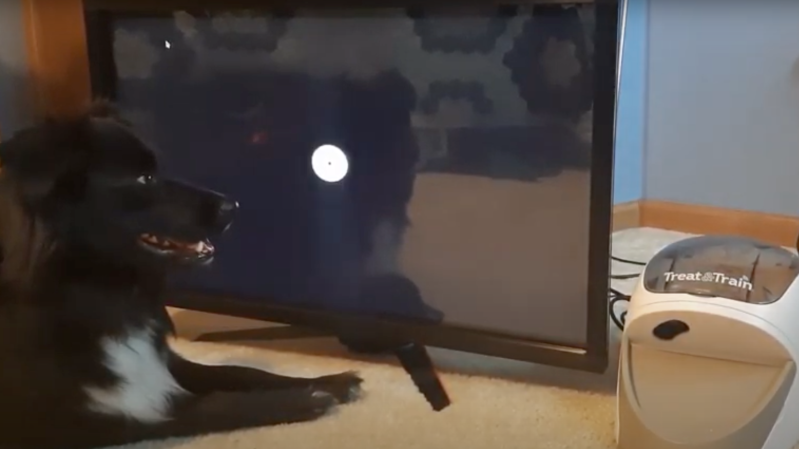An open-source canine training research tool was just been released by [Walker Arce] and [Jeffrey Stevens] at the University of Nebraska — Lincoln’s Canine Cognition and Human Interaction Lab (C-CHIL).
We didn’t realize that dog training research techniques were so high-tech. Operant conditioning, as opposed to Pavlovian, gives a positive reward, in this case dog treats, to reinforce a desired behavior. Traditionally operant conditioning involved dispensing the treat manually and some devices do exist using wireless remote controls, but they are still manually operated and can give inconsistent results (too many or too few treats). There weren’t any existing methods available to automate this process, so this team decided to rectify the situation.
They took a commercial treat dispenser and retro-fitted it with an interface board that taps into the dispenser’s IR sensors to detect that the hopper is moving and treats were actually dispensed. The interface board connects to a Raspberry Pi which serves as a full-featured platform to run the tests. In this demonstration it connects to an HDMI monitor, detecting touches from the dog’s nose to correlate with events onscreen. Future researchers won’t have to reinvent the wheel, just redesign the test itself, because [Walker] and [Jeffrey] have released all the firmware and hardware as open-source on the lab’s GitHub repository.
In the short video clip below, watch the dog as he gets a treat when he taps the white dot with his snout. If you look closely, at one point the dog briefly moves the mouse pointer as well. We predict by next year the C-CHIL researchers will have this fellow drawing pictures and playing checkers.
This isn’t the first animal behavior hack we’ve seen this month. Check out [Hans’] feeder that trains birds to clean up bottlecaps.















https://www.instagram.com/hunger4words/
In a year, that border collie will be writing python.
And the poor Afghan Hound won’t even have had one treat.
that reminds me of project pigeon; https://en.wikipedia.org/wiki/Project_Pigeon where pigeons were used to steer a guided missile by pecking at the target projected on a screen.
Keep in mind that you really can’t teach an old dog new tricks. Pokey turned 14 two weeks ago, older than many Labradors. He’s slowed down, no more brisk walks, less curiosity, sleeping most of the time, not interested in toys.
Food and going for a walk is all he desires, and his idea of a long walk is risky, I keep worrying about getting him home.
No one lives forever, even best friends. Just love him while you have him.
If I ever find the time, I intend to use technology for some practical dog training. I want to desensitive my dogs to people/dogs walking by the house so they stop barking so much. But that requires having their attention, which is really hard to get after they are already reacting. My first thought is to setup security cameras tied to object recognition that can track if someone is going to walk within view of our windows or yard and send a notification to us humans so we can go do some focus training as they get in view. This post gives me the idea that we could make it more interactive. If there is someone in view, the cameras can illuminate a button for the dogs to press and get a treat. Hopefully they’ll be more focused on pressing the button than barking.
You don’t build focus by immediately jumping on the situation. The best way to build focus is to have many activities with your dog, which includes a lot of walking, where you are in charge. Your dog is likely high energy, so you need to sink it, with your whole family taking part. Any kind of automation or externalizing of training is doomed to failure.